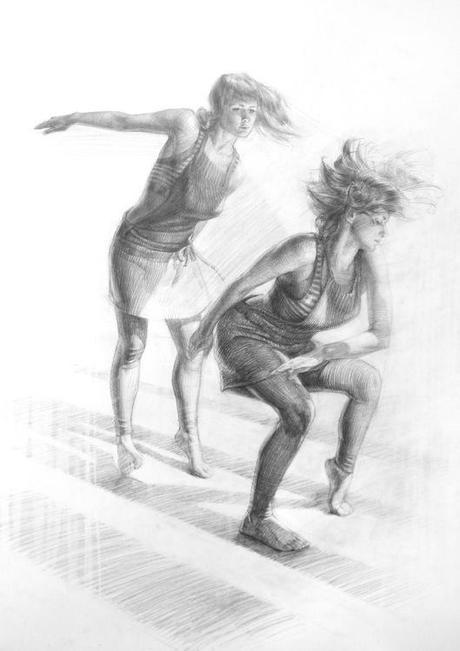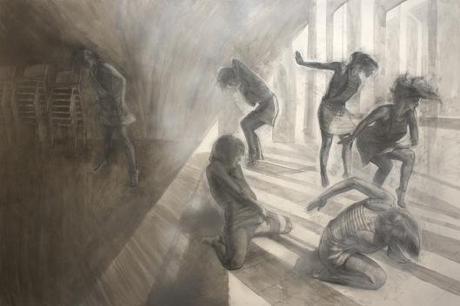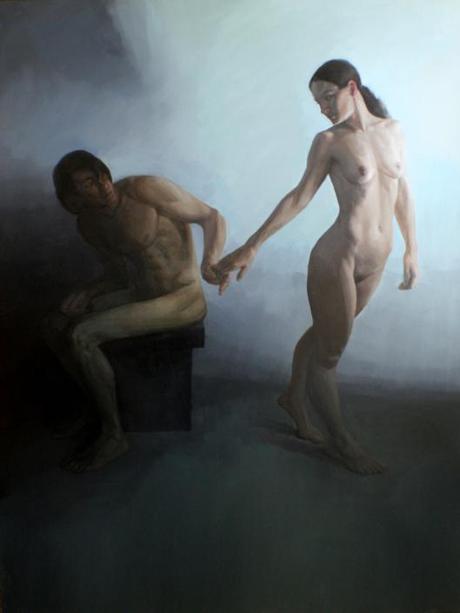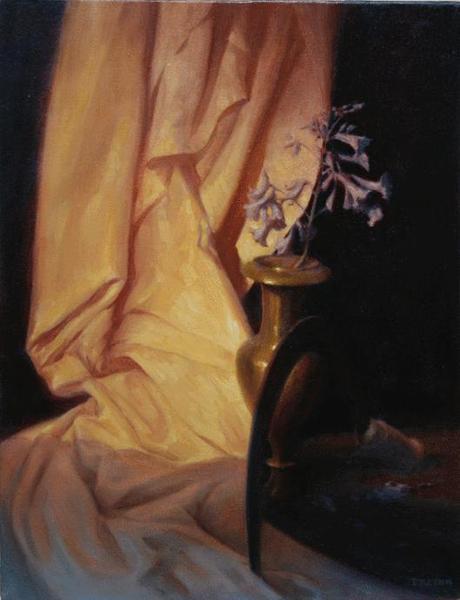
Dancer studies © Scott Breton
Scott Breton, one of my teachers at Atelier Art Classes (and, just quietly, this year’s winner of the AME Bale travelling scholarship), gave a talk about his work at the Royal Queensland Art Society (RQAS) a couple of Sundays ago. It was thoroughly insightful to see where he’s come from, and what he’s been trying to achieve all this time. I’ve seen a lot of his dark still lives and been surprised at the heaviness of them; a dark psychology radiates from paintings produced by an amiable if serious young man. Consistent reds and blues glow in the passages of paintings that are softly lit. People are cut up as if by time slices, leaping mid-air. Narrative mostly takes the form of sequential figures. And he’s very open to adapting his process, drawing in pencil from life, developing an image digitally before finally painting it in oils. He’s methodical, but obsessed with discovering new methods all the time. Currently, he’s all about the drawing beneath the painting, the drawing as part of the painting. A mysterious mix of artistic attributes.

Dance composition © Scott Breton
Scott’s talk followed the chronology of his work, beginning with an early painting of a young man dragging the weight of modern art in a gilt frame on his back. He quickly came to realise that he didn’t want to labour over meaning in this way in his work—that meaning can, in fact, be something less readily expressible than social commentary. Many things can be said in words, but some things can’t be said at all—they must simply be seen, and felt. Scott considered the strongest and most resonant part of this early painting to be the execution of the figure itself. Tracing through his early explorations, it was amazing to me to see how the figure alone—bare, exposed, unadorned with symbolism—can be so pregnant with meaning. Another early painting explores this simplicity through the body language of a man (Despair) and a woman (Optimism), conveying a meaning through mood and through that physical language that we all speak. The human form and body language are so expressive, and Scott became concerned with tapping that psychological element.

Optimism and Despair © Scott Breton
Much of his work is moody, and he openly admits to being inspired by music—directly and indirectly. Older paintings explore the idea of a ‘key change’, as in music, only through colour and form. Drapery changes direction and shifts from blue to red with hushed shadows, and this motif returns again and again in more subtle ways in later still lives, in which the light turns a corner and softly introduces a new key. His current work involves a dancer, who improvises to music he puts on. He draws her trailing around the floor, her hair and woollen dress floating about her, and she becomes a time-worm, creating a circle of temporal selves. These paintings are four-dimensional—incorporating time in a very visual way, not simply through change, but through adjacent moments sliding into one another.

Jacaranda harvest © Scott Breton
Seeing where your teacher has come from and where they are going is a pretty special thing. Scott thinks so deeply and brings so much conceptually to his work, though not in the manner usual to modern art. His concepts are more directly connected to the process of painting, pushing the medium to express things best represented visually.
Swing by his blog for updates on his dancers and other work. Or sign up for a class with him on Tuesdays and Wednesday nights!
